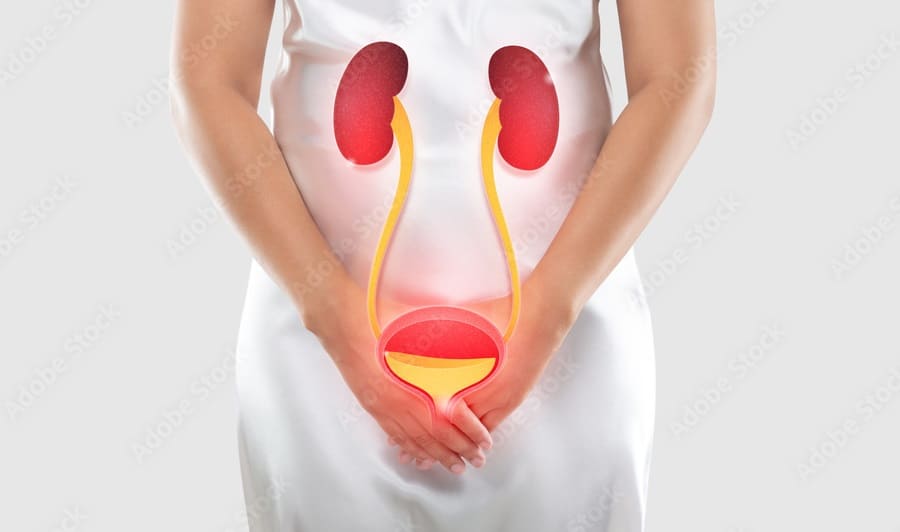Urinary incontinence, or the loss of bladder control, is a common issue among women, especially after childbirth, during menopause, or due to aging. While it can be embarrassing, the good news is that there are effective exercises and home remedies for female urinary incontinence that can help strengthen the bladder and improve control. Let’s explore some practical solutions.
8 Effective Exercises for Urinary Incontinence
1) Kegel Exercises
Kegels strengthen the pelvic floor muscles, which support the bladder and control urine flow.
- Identify the right muscles by stopping urine midstream.
- Contract these muscles for 3-5 seconds, then relax for the same amount of time.
- Repeat this 10-15 times per session, 3 times a day.
- Increase the duration as you get stronger.
2) Bridge Pose
This yoga-inspired exercise helps tone the pelvic region.
- Lie on your back with knees bent and feet hip-width apart.
- Lift your hips while tightening your pelvic muscles.
- Hold for a few seconds before lowering down.
- Repeat 10-15 times daily.
- Ensure controlled breathing for added benefit.
3) Squats
Squats engage the pelvic muscles and improve bladder control.
- Stand with feet shoulder-width apart.
- Lower yourself as if sitting in a chair, keeping knees behind toes.
- Hold for a few seconds and rise back up.
- Perform 10-15 squats daily.
- Maintain proper posture to prevent strain.
4) Pelvic Tilts
This movement strengthens the lower abdomen and pelvic floor.
- Lie on your back with knees bent.
- Tighten your stomach muscles and tilt your pelvis upward.
- Hold for 5 seconds, then release.
- Repeat 10-15 times.
- Incorporate deep breathing to enhance effectiveness.
5) Toe Taps
This simple yet effective exercise can help improve pelvic control.
- Lie on your back with knees bent at 90 degrees.
- Slowly lower one foot to tap the floor and return.
- Repeat with the other foot, alternating for 10-15 reps per side.
- Focus on controlled movement to activate deep core muscles.
6) Heel Slides
- Lie on your back with legs straight.
- Slide one heel toward your buttocks while engaging your core.
- Return to the starting position and repeat with the other leg.
- Perform 10-15 reps per leg.
7) Seated Marching
- Sit on a sturdy chair with feet flat on the ground.
- Lift one knee at a time as if marching.
- Keep your core engaged and maintain good posture.
- Perform for 1-2 minutes.
8) Lunges
- Step one foot forward and lower into a lunge position.
- Engage your pelvic floor muscles as you return to the starting position.
- Repeat 10-15 times per leg.
10 Effective Home Remedies for Urinary Incontinence
1) Bladder Training
- Try delaying urination by a few minutes when you feel the urge.
- Gradually increase the time between bathroom visits.
- Aim for urinating every 2-4 hours.
- Keep a bladder diary to track progress and identify triggers.
2) Healthy Fluid Intake
- Drink enough water to stay hydrated but avoid excessive intake before bedtime.
- Cut down on caffeine, alcohol, and carbonated drinks, as they can irritate the bladder.
- Opt for herbal teas like chamomile, which has calming effects on the bladder.
3) Herbal Remedies
- Pumpkin Seed Extract: Rich in essential fatty acids and phytoestrogens, it can help strengthen bladder function.
- Corn Silk Tea: Acts as a natural diuretic and soothes the urinary tract.
- Horsetail Tea: A traditional remedy known to improve bladder control.
- Gosha-jinki-gan: A blend of herbs commonly used in traditional medicine to reduce urinary urgency.
4) Maintain a Healthy Weight
- Excess weight puts pressure on the bladder and pelvic muscles.
- Regular exercise and a balanced diet can aid in weight management.
- Avoid processed foods and focus on whole, fiber-rich meals.
5) Dietary Changes
- Include fiber-rich foods to prevent constipation, which can worsen incontinence.
- Eat magnesium-rich foods like bananas and spinach to improve muscle function.
- Consume vitamin D-rich foods like eggs and fish, as studies suggest vitamin D supports bladder health.
- Add probiotics to your diet, such as yogurt and kefir, to support gut health and reduce bladder irritation.
6) Acupuncture
- Some studies suggest acupuncture may help with overactive bladder symptoms.
- Targeting specific pressure points can enhance bladder function and relaxation.
- Seek a trained professional for best results.
7) Aromatherapy and Essential Oils
- Lavender oil can help relax the bladder and reduce urgency.
- Cypress oil is believed to strengthen urinary tract muscles.
- Mix essential oils with a carrier oil and massage the lower abdomen.
8) Apple Cider Vinegar
- Believed to reduce bladder infections and improve digestion.
- Mix a tablespoon of apple cider vinegar with warm water and drink once daily.
9) Baking Soda Remedy
- May help neutralize acidic urine and reduce irritation.
- Mix half a teaspoon of baking soda with a glass of water and drink occasionally.
10) Yoga and Meditation
- Stress and anxiety can worsen incontinence symptoms.
- Practicing mindfulness, meditation, and deep breathing can help reduce urgency.
Final Thoughts
Female urinary incontinence can be managed with a combination of exercises, home remedies, and lifestyle changes. With consistency, many women see significant improvements. If symptoms persist or worsen, consult a healthcare professional for further guidance. Remember, you’re not alone in this journey, and simple steps can make a big difference!
